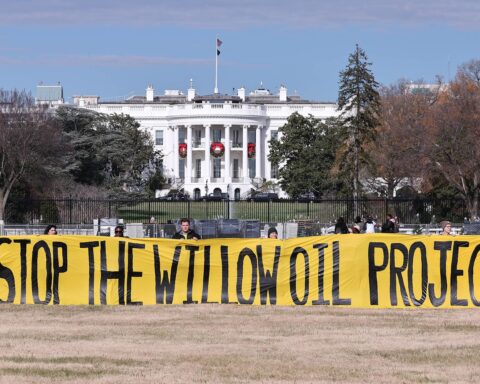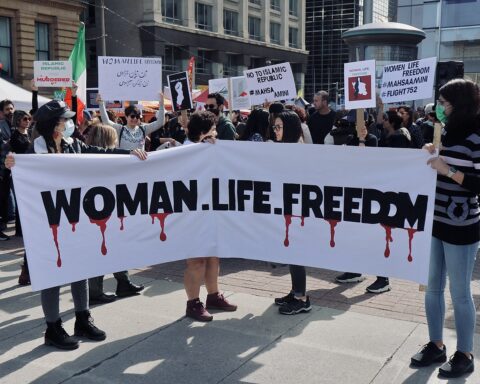BRUSSELS (Parliament Politics Magazine) – The European Commission has unveiled a plan of 210 billion euro ($220 billion) to wean Europe off Russian fossil fuels in five years and accelerate the process of switching to green energy.
The decision comes as the EU rethinks its energy policies in the wake of Russia’s invasion of Ukraine, which has heightened fears about supply disruptions.
They were raising their ambition to ensure that they become independent of Russian fossil fuels as rapidly as feasible, said Ursula von der Leyen, President of the EU Commission President in Brussels on Wednesday when presenting the REPowerEU package.
Moscow provides 40% of the EU’s gas and 27% of its imported oil, and EU nations are unable to reach an agreement on sanctions against the latter.
The EU’s rush to abandon Russian energy is the result of a mix of voluntary and forced steps. Both illustrate the political unease about funding Russia’s military assault in a country that borders the EU and wants to join.
A ban on Russian coal is set to begin in August, and the EU has committed to limit demand for Russian gas by two-thirds by the end of the year. Meanwhile, Hungary and other landlocked countries have raised concerns about the cost of moving to alternative energy sources in response to a possible EU oil embargo.
The initiatives include a mix of EU rules, non-binding plans, and suggestions to the EU’s 27 member countries’ governments, who are essentially in charge of their own national energy policies.
Brussels estimates that they will require 210 billion euros in additional expenditures by the year 2027 and 300 billion euros ($314 billion) by the year 2030, on top of the investments already required to reach the EU’s 2030 climate objective. Finally, it claimed that the investments will reduce Europe’s reliance on imported fossil fuels.
RePowerEU would help them save more energy, speed the phase-out of fossil fuels, and, most crucially, kick-start investments on a larger scale, said von der Leyen.
Renewable energy will receive 86 billion euros ($90 billion), hydrogen infrastructure will receive 27 billion euros ($28 billion), power grids will receive 29 billion euros ($30 billion), and energy savings and heat pumps will receive 56 billion euros ($59 billion).
The Commission stated that some fossil fuel infrastructure investments would be needed, including 10 billion euros ($10 billion) for a dozen gas and liquefied natural gas projects, as well as up to two billion euros ($2.1 billion) for oil, aimed at landlocked Central and Eastern European countries that do not have access to non-Russian supply.
These expenditures, according to campaigners, risk tying the EU into a long-term reliance on CO2-emitting gas, aggravating climate change and driving up energy prices. New gas infrastructure, according to the Commission, should be able to adapt to carrying renewable hydrogen in the future.
Brussels wants countries to fund the measures with money from the EU’s COVID-19 recovery fund, which has over 200 billion euros in unspent loans.
Over the coming few years, the Commission will also sell extra carbon market permits from a reserve to collect 20 billion euros ($21 billion). According to some economists, this could lower carbon prices, undercutting the price signal for low-carbon energy.
To lead the charge, the Commission suggested a greater legally-binding objective of 45 percent renewable energy by 2030, up from its existing aim of 40 percent.
By 2030, the EU’s renewable energy capacity would have more than doubled to 1,236 gigawatts (GW), bolstered by a regulation allowing for one-year licences for solar and wind projects. The EU has recommended phasing in obligations for countries to install solar panels on new buildings.
Another goal would reduce EU energy usage by 13% by 2030 compared to predicted levels, replacing the existing proposal of 9%. The EU is working on legislation to speed up building renovations so that they consume less energy, and voluntary initiatives like turning down thermostats could reduce gas and oil demand by 5%.
EU countries and legislators must approve the legally obligatory targets.
The EU strategy involves a short-term rush for non-Russian gas supply to replace the 155 billion cubic metres (4,061 cubic feet) of gas Europe buys annually from Moscow. To fulfil climate targets, Europe’s gas usage is predicted to drop 30% by 2030, but for now, countries depend on the fuel to heat homes, power industry, and generate electricity.
By mid-year, the EU hopes to establish a memorandum of understanding on LNG supply with Israel and Egypt, and to increase LNG supplies from countries such as Algeria and Canada. In order to try to negotiate better contract conditions, Brussels will also develop a plan for countries to buy gas together.






